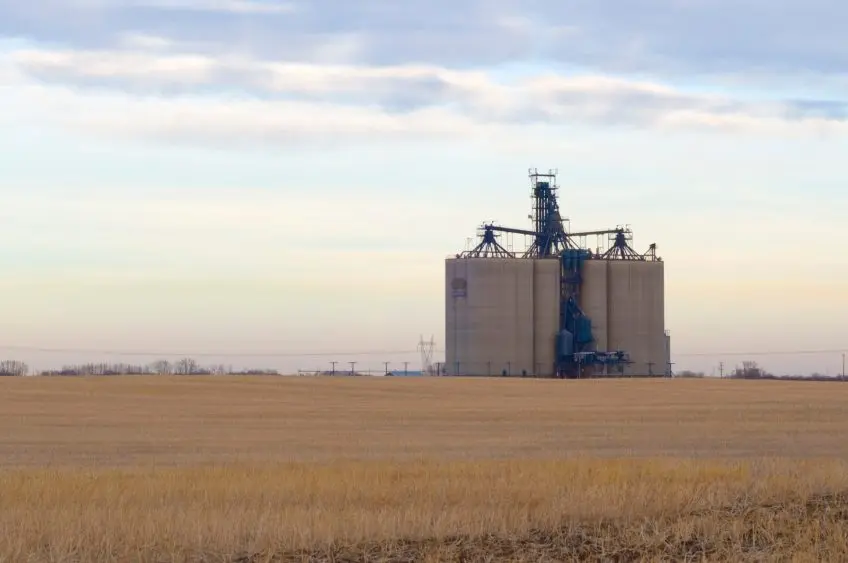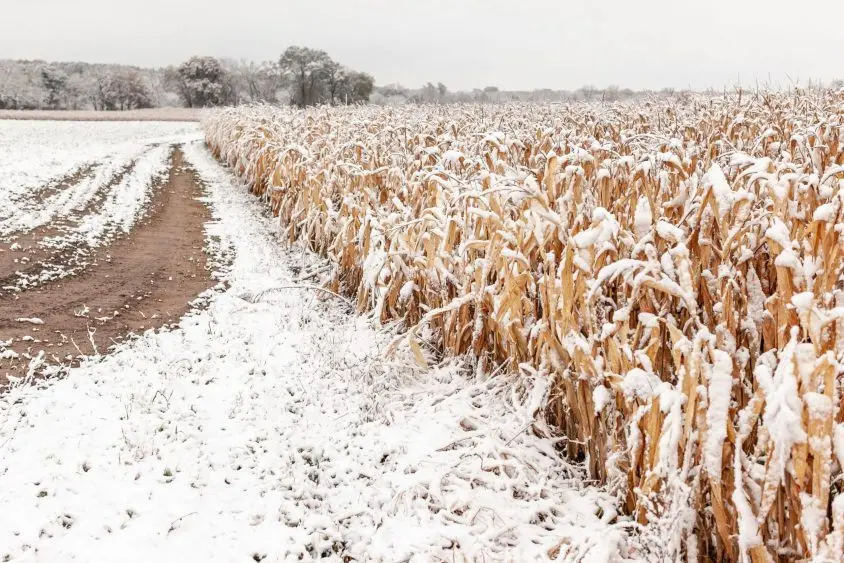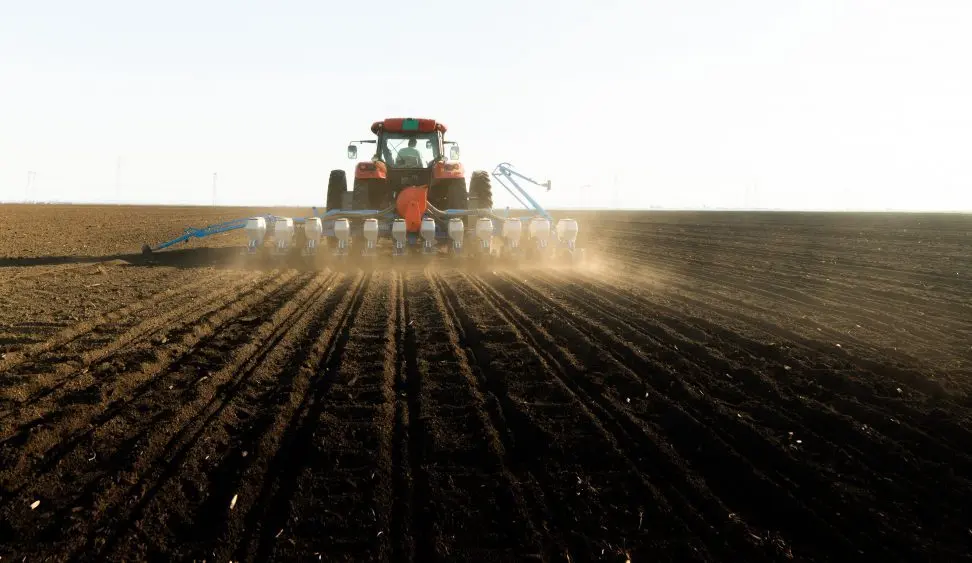
DENVER (Oct. 6, 2025)—The U.S. is bracing for a record grain harvest totaling 21.5 billion bushels of corn, soybeans and grain sorghum this fall. The bumper crop arrives during a period of heightened uncertainty surrounding the future of the U.S. trade relationship with China, low export market demand for U.S. soybeans and depressed crop prices. Meanwhile, grain storage and transportation logistics are shaping up to be much more complicated than usual.
According to a new report from CoBank’s Knowledge Exchange, grain storage space will be extraordinarily tight this fall with grain merchandisers charging higher fees due to limited capacity and strained infrastructure. While grain elevators stand to benefit from buying cheaper basis and capturing wider carries in the futures markets, the profit opportunities are not without risk.
“The challenge for elevators will be prioritizing scarce grain storage,” said Tanner Ehmke, grains and oilseeds economist with CoBank. “Among the top 12 corn-producing states, the U.S. is facing a 1.4-billion-bushel shortage of upright grain storage this year with elevators relying more on bunkers and emergency storage like ground piles. This year’s shortage stands in stark contrast to last year when those states had a combined 361 million bushels of excess storage.”
Conversely, soybean and grain sorghum export sales are lagging well behind prior years. Soybean sales are down 51% year-over-year while grain sorghum sales are starting the season down 58%. The weak shipping pace of soybeans and grain sorghum will allow more transportation and elevation capacity to be used to support corn and wheat shipments to the Pacific Northwest and the U.S. Gulf.
“The slow pace of soybean and grain sorghum exports may benefit corn and wheat,” said Ehmke. “Elevators struggling with tight storage may prioritize corn and wheat over soybeans and grain sorghum due to the more reliable export flows and lower risk associated with corn and wheat.”
Low water levels on the lower Mississippi river have led to restrictions on draft and tow sizes, elevating downbound barge rates. As of Sept. 23, the barge freight rate for shipping grain along the lower Mississippi was $19.53 per ton, according to USDA-AMS. That’s up 31% from four weeks prior but still 14% lower than the same time last year when extreme dryness restricted barge movement. However, below-average soybean shipments down the Mississippi may slow the rise in barge freight rates and allow for larger shipments of corn and wheat.
Ocean vessel rates at the PNW for carrying grain have fallen 6.8% year-over-year, while rates at the U.S. Gulf are down 12.7%, incentivizing U.S. grain and oilseed exports. But rates are now climbing as peak shipping season is approaching.
Concern over new fees on Chinese-flagged or Chinese-made ocean vessels docking in the U.S. has been muted among grain traders. Exemptions for vessels under a dry weight tonnage of 80,000 tons or vessels arriving empty have tempered concern. The fees on Chinese vessels are set to go into effect on Oct. 14. However, some shipping companies are still nervous about political uncertainty and are reluctant to send ships to the U.S., which could affect ocean freight rates during the peak shipping season.
The lack of export demand for soybeans has weakened basis levels across the U.S., particularly in Northern Plains regions that rely heavily on export shipments to the PNW. However, the rapid expansion of domestic soy crush capacity has supported basis in some regions.
“Due to the risk of lost export demand, some elevators across the Northern Plains that lack local crush demand may not accept soybeans over fears of not being able to access the export market later,” said Ehmke. “For elevators reluctant to take delivery and short soybean basis, basis is being set at historically low levels with storage fees set at higher rates.”
Elevators with ample wheat bushels heading into fall harvest are raising storage rates. While wheat elevators have benefited from cheaper basis and bigger carries, some have still decided to move wheat to make space for fall harvest. The U.S. is currently enjoying an impressive export program for wheat, allowing elevators the opportunity to make space for corn, soybeans and grain sorghum.
With China typically accounting for 80-90% of U.S. grain sorghum exports, the loss of Chinese business has dramatically affected basis. Grain sorghum basis has fallen to historically low levels with elevators reluctant to take on the risk of buying and storing the commodity in the current market environment. Strong ethanol demand for grain sorghum has supported basis in some local markets.
“Grain merchandisers will benefit from bigger carries for corn, soybeans and wheat that continue to widen, giving elevators ample opportunity to profit on storage,” said Ehmke. “But elevators will need to prioritize scare storage space. Soybeans will have the highest cost of carry versus corn, wheat or grain sorghum. Storing soybeans indefinitely amid a slow export pace also comes with the risk of quality degradation over time.”
To eliminate the risk and uncertainty associated with DP programs, some elevators have opted for cash-only programs with farmers. Others may offer minimum price contracts and extended price contracts to create alternative marketing programs for farmers.
“The risk to elevators will be farmers not selling and opting instead for DP programs,” said Ehmke. “Fees on DP programs that are appropriately structured ahead of harvest may encourage farmers to sell. DP programs will need to be well-structured and limited to account for higher risk of carrying unpriced grain in a carry market.”
Read the report, Grain Logistics Outlook: Record Crop Meets Trade Uncertainty.
About CoBank
CoBank is a cooperative bank serving vital industries across rural America. The bank provides loans, leases, export financing and other financial services to agribusinesses and rural power, water and communications providers in all 50 states. The bank also provides wholesale loans and other financial services to affiliated Farm Credit associations serving more than 78,000 farmers, ranchers and other rural borrowers in 23 states around the country. CoBank is a member of the Farm Credit System, a nationwide network of banks and retail lending associations chartered to support the borrowing needs of U.S. agriculture, rural infrastructure and rural communities. Headquartered outside Denver, Colorado, CoBank serves customers from regional banking centers across the U.S. and also maintains an international representative office in Singapore.



